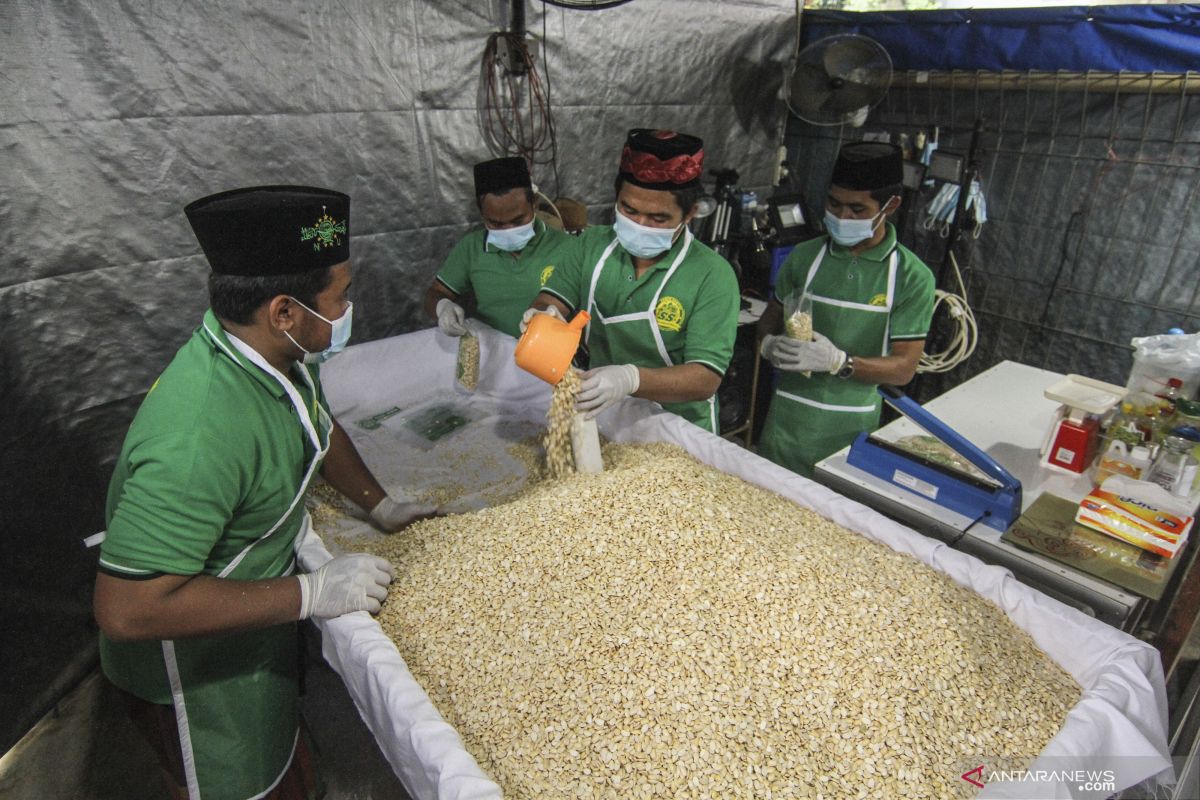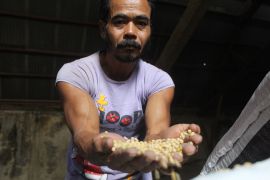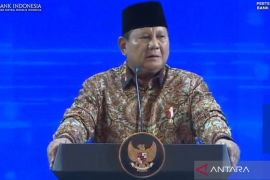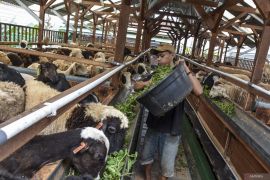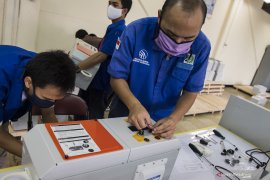The two commodities had suddenly become rare items, hunted down by families, who consume them as staples.
Strikes carried out by producers of tofu and tempe, which were prompted by a spike in the price of imported soy, were then discovered to be the cause of their disappearance from market shelves.
The price of imported soy, the main ingredient in both commodities, had shot up from around seven thousand Indonesian rupiahs to around Rp9 thousand per kilogram, which was deemed a burden on the tempe and tofu industry.
Related news: Tofu, tempe record inflation amid soybean price hike: BPS
Tempe and tofu are often labeled as the food of the people as they are staples in middle- to lower-class households, which predominate in Indonesia.
Although they are often seen as staple foods in lower-class households, the production of both tempe and tofu relies on imports of soybeans, especially from the United States.
According to data from the Central Bureau of Statistics (BPS), Indonesia imported 1.27 tons of soybeans, worth Rp7.52 trillion, in the first half of 2020. Ninety-five percent, or 1.14 million tons, of the total soybean imported into the country was brought in from the United States
Reliance on imported raw materials can create instability in the domestic tempe and tofu industry whenever there is a disruption in the origin country, including a decline in production, as seen in the case of imported soy.
High demand for soybeans in the global market and a decline in production in producer countries were the main reasons for the spike in prices of imported soy.
Indonesian Minister of Trade, Muhammad Lutfi, said soy prices had reached US$13 per bushel in the independent global market, their highest level in the last six years.
With that in mind, it is considered necessary for the government to lay down policies to ensure that Indonesia does not remain highly dependent on the US as its sole supplier of soybeans for meeting domestic demand.
There are a number of other soybean producer countries with which Indonesia can explore cooperation, including Brazil, Argentina, Paraguay, India, Canada, Russia, Ukraine, and several African countries.
Aside from direct purchases, as proposed by Commission VI of the House of Representatives, Indonesia can also offer other commodities in exchange for soybeans, such as palm oil, coffee, and other seeded products.
Related news: Superior Indonesian soybeans
National production
Seeking other producer countries to reduce Indonesia’s reliance on soybean supply from the US can be one solution to address the spike in the prices of the commodity.
However, it can only be a temporary solution to the soybean supply crunch in the country, which is an annual occurrence in the domestic industry.
The soybean shortage in the country can be addressed by increasing national production capacity. That way, the industry would no longer have to depend on imports.
Self-reliance on soybeans is becoming increasingly important, especially for it to be used as a raw material for the production of tempe and tofu, as demand has continued to increase each year.
The BPS has recorded that the national demand for soybeans currently stands at 2.8 million tons per year, whilst domestic production is recorded at a mere 800 thousand tons per year. In 2021, the government is aiming to produce 420 thousand tons of soybeans.
Around 70 per cent of domestic soybean production is allocated for tempe production, while 25 per cent is allocated for tofu and the rest for making other products.
In 1992, Indonesia was self-reliant in soybean production, with output reaching 1.8 million tonnes. If the country can revive its annual production capacity, soybean imports could perhaps be minimized to just one million tons.
Considering the low soybean yield per hectare in plantations, there are measures that need to be taken in order to boost productivity and elevate national production, even to the point where the country can become self-reliant in soybean production.
Challenges
Soybean cultivation in the country has been carried out by local farmers for a relatively long time, though the production level has yet to meet domestic demand.
There are a number of challenges that come into play, including the fact that growing soybean is less competitive compared to other food commodities, especially rice, the staple food in most households in Indonesia. Aside from productivity, selling prices among farmers are also seen as a factor in the development of the local soybean industry.
These factors weigh in on the lack of market stability for the commodity compared to other food products.
Minister of Agriculture, Syahrul Yasin Limpo, has said that increasing soybean production will not be an easy endeavor, considering its position: it is still seen as an intermediary crop to the main ones, such as rice, corn, sugar cane, tobacco, and shallots.
This poses a challenge for farmers in boosting soybean production, as most farmers would prefer to plant other commodities that offer greater market certainty.
Therefore, policies or incentives need to be put in place to encourage farmers to plant more soybeans, and convince them that it would be beneficial for their business and welfare.
The Ministry of Agriculture has taken steps to boost domestic soybean production. This year, the Ministry has allocated nine thousand hectares of land for soybean development assistance in North Sulawesi, 30 thousand hectares in West Sulawesi, and nine thousand hectares in South Sulawesi.
Additionally, it has also built downstream partnerships and markets for the tofu and tempe industry, along with farmers in central Java, where soybean acreage stands at 15 thousand hectares, East Java (15 thousand hectares), as well as West Nusa Tenggara (4 thousand hectares).
Apart from the efforts carried out by the ministry, other institutions and even the academia need to be involved in encouraging the growth of the domestic soybean industry, including through integrating the results of agriculture research on superior seeds.
Through such endeavors, soybean production can increase and production prices can fall, which can be done gradually, without carrying out imports. In other words, domestic soybean production must be competitive, both in terms of quality and price.
It seems that the government needs to adopt various policy measures and optimize the facilities and infrastructure available to help Indonesia once again achieve soybean self-sufficiency.
That way, Indonesia can meet the demand for not only soybeans, but also other food commodities such as rice, corn, and garlic without having to rely on imports, and save on foreign exchange.
In the long term, Indonesia must be able to meet its food needs independently in order to ensure that the country’s food stability is not impacted should other countries experience hindrances in production.
Related news: Tracing tempe's appeal in Indonesian culinary history
Related news: Indonesian diaspora to build tempe factory in Indiana, the US
Reporter: Aria Cindyara
Editor: Sri Haryati
Copyright © ANTARA 2021
